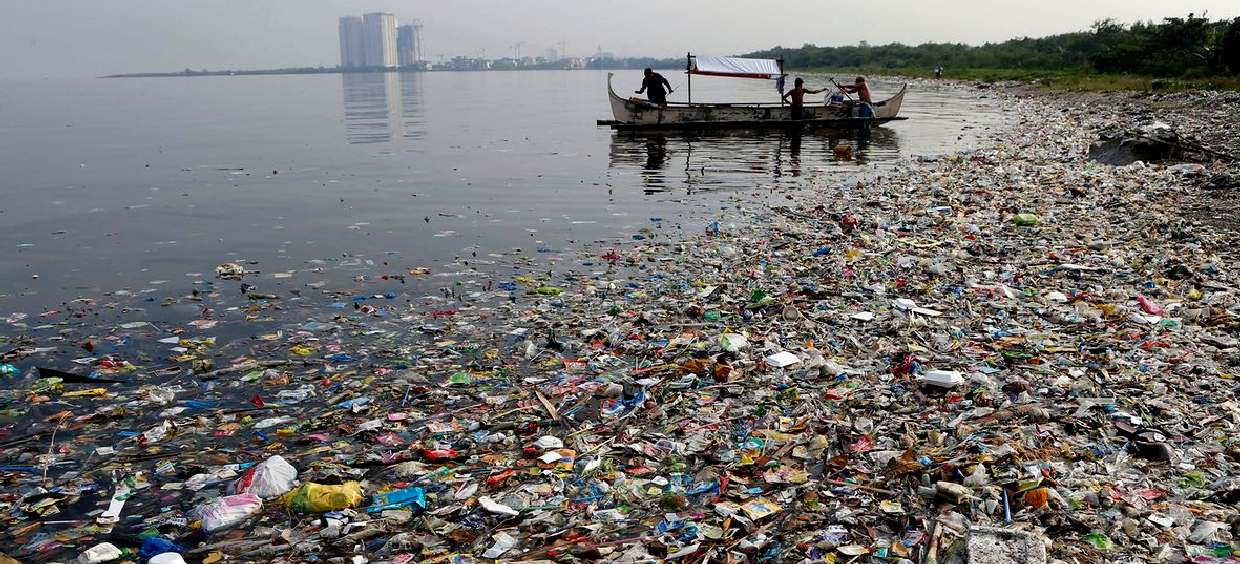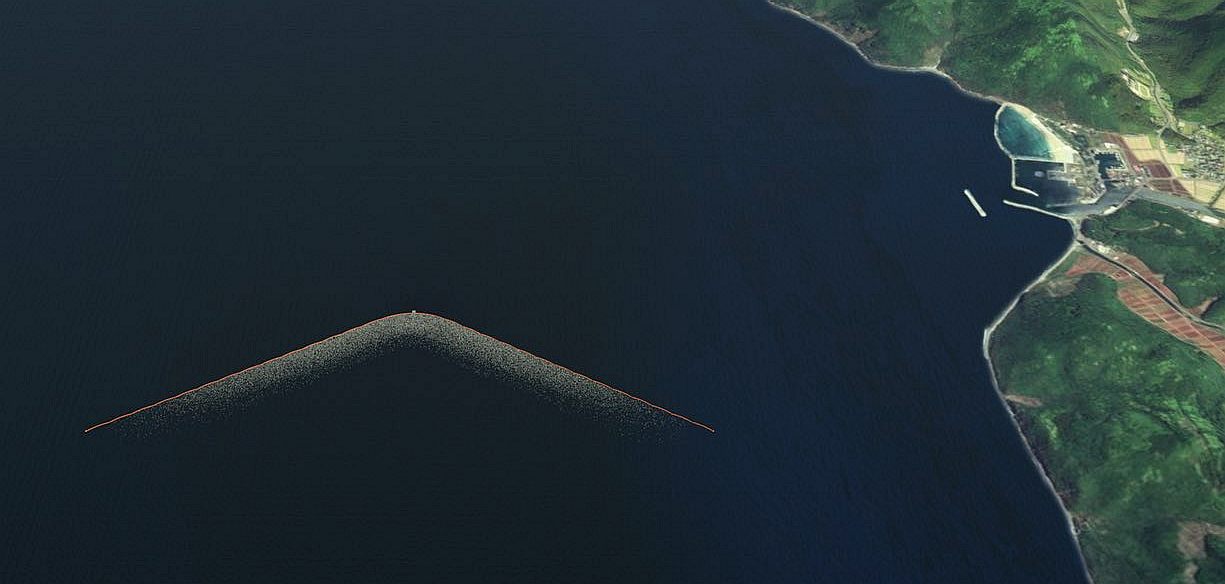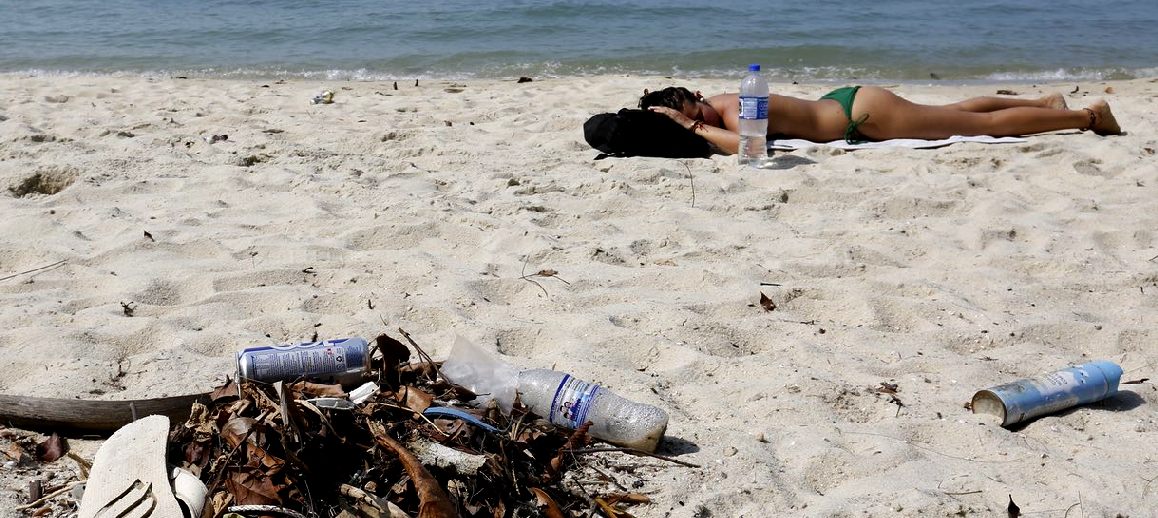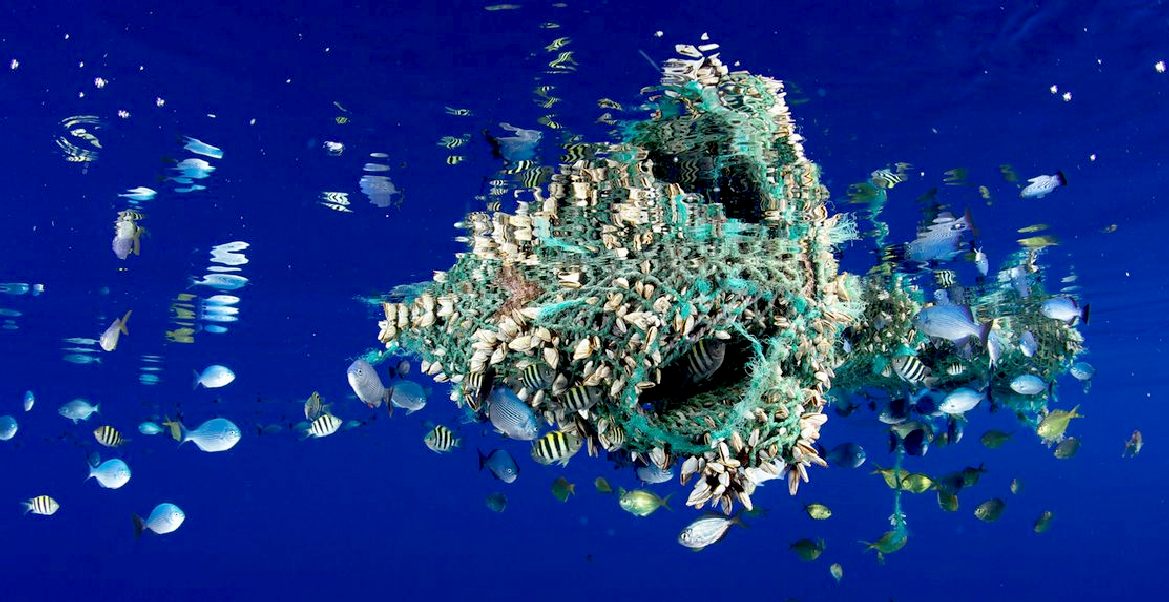|
THE
GUARDIAN
- OCEAN CLEANUP PROJECT

FAST
LIVING KILLS LIFE ON EARTH - Modern society creates huge
rivers of waste that washes out to sea and kills marine life.
26
MARCH 2016
Last year, nonprofit foundation The Ocean Cleanup hit a milestone en route to its goal of deploying a large, floating structure to pull plastic from the Great Pacific Garbage Patch. The organization issued a press release announcing it had completed a reconnaissance expedition that would pave the way for a June 2016 test of its prototype. With the help of $2.2m in crowdfunding, 21-year-old founder
Boyan Slat announced his plans to deploy 100 kilometers of passive floating barriers in an effort to clean up 42% of the Great Pacific Garbage Patch’s plastic pollution in 10 years.
Despite considerable online enthusiasm for the project, oceanographers and biologists are voicing less-publicized concerns. They question whether the design will work as described and survive the natural forces of the open ocean, how it will affect sea life, and whether this is actually the best way to tackle the problem of ocean plastic – or merely a distraction from the bigger problem of pollution prevention. Many have also expressed concern about the lack of an environmental impact statement prior to such a large push for funding.
“The thing is, what we’re trying to achieve has never been done before,” Slat says. It’s 100 times bigger than anything that’s ever been deployed in the ocean. It’s 50% deeper, and 10 times more remote than the world’s most remote oil rig. So obviously there [are] technical challenges.”
In the summer of 2014, The Ocean Cleanup released a 528-page feasibility study, which Slat and his team used to determine that the project was possible. As described in the study, the passive system relies on wind, waves and currents to push the floating plastic into screens that extend from the floating barriers like a skirt. The idea is that the current can pass beneath the screens, which will prevent bycatch of plants and animals. Since plastic floats, ocean pollution between 35-100 millimeters in size will be captured by the barriers. The v-shape of the array then concentrates the plastic pieces at the center of the structure, where they can be harvested and then sorted and processed in a collection platform. After the plastic is processed, it will be collected by boat every six weeks, with the hope that it can be sold as recycled material.
In the feasibility study, The Ocean Cleanup offers four possible designs, but Slat says they’re still working on finalizing a concrete design of the collection platform.
Scientists like physical oceanographer Kim Martini and biological oceanographer Miriam Goldstein still aren’t convinced that the structure can overcome the technical challenges. After the feasibility study was published in 2014, Martini and Goldstein published their own technical review on
DeepSeaNews.com. They say their concerns have remained largely unaddressed.
Martini says Slat’s response was limited to a statement he made on a discussion panel. While he said he was “very happy they have read it”, and that they made valid points, Martini doesn’t think Slat has made a sufficient response to his concerns.
“We continue to have serious reservations about the success of the project due to the quality of the responses [to our review] that we could find, and [to] the Ocean Cleanup’s substantive misinterpretation of oceanography, ecology, engineering and marine debris distribution, all of which are necessary for this project to succeed,” Martini wrote in an email.
Since the feasibility study, The Ocean Cleanup team has focused the most on the engineering and design side, according to Slat. Since 2014, Slat and his team have deployed two scale model tests at water research centers called Deltares and Marin. Based on the scale tests, the team is trying to better understand and model how the structure will react to the wind, waves and currents it will experience in the open ocean, and how plastic will behave. Slat is characteristically optimistic. Though Martini and Goldstein wrote that the feasibility study underestimated the forces of currents and waves, Slat says based on his tests, “the forces are actually a lot lower than we thought they would be”.
Another force the array might have to contend with is biofouling. Biofouling happens when marine life affixes itself to the structure, weighing it down and affecting its performance. Nonetheless, Slat does not see this as a concern. “We’re testing different environmentally friendly coatings to prevent biofouling,” he says. “It’s something that is an active part of our research, but it’s not on our top 10 list of concerns.”

ENGINEERING
& LOGISTICS CHALLENGE - It's not that it cannot be
done. Anything can be accomplished with sufficient resources
if you just work at it. The concept has not yet been tried to
be able to say how well it will or will not work and/or what
the side effects might be. We simply have to try ideas to
filter out the implausible and foster those with merit.
While the feasibility study devotes pages to the impacts on phytoplankton and zooplankton and other sea life, it fails to consider species that actually live in the gyre region, according to critics. In a September 2015 blog post, 5 Gyres, an activism, research and education nonprofit dedicated to issues of aquatic
plastic pollution, pointed out that buoyant organisms like Velella velella or purple janthina snails that float along on the surface would likely not be able to flow beneath the array’s screen as planned. “The potential for ‘bycatch’ is too great to be ignored,” 5 Gyres writes.
“It’s unfortunate that there were some taxa that were covered that aren’t in the gyre,” Slat says, citing the large number of volunteers who worked on the study. “But we don’t want to create new problems. Right now we don’t see any evidence based arguments why it should be a problem.”
The Ocean Cleanup’s array, as deep-sea biologist Andrew David Thaler wrote on
SouthernFriedScience.com, is also a fish aggregating device. As the v-shape concentrates plastic debris in the center, it also has the potential to attract predator and prey species, disrupting their normal behavior or migration patterns. It could also make them more susceptible to consuming the plastic accumulating in the array.
The Ocean Cleanup is continuing to test and refine the concept. After the crowdfunding campaign in 2014, Slat hired 35 more employees “to really get some speed and tackle these challenges”.
The team has done a series of six expeditions since 2013 to measure the depth and size of ocean plastics within the gyre, the results of which will be published in a study that Slat says he “will be submitting to a high-impact open-access peer reviewed journal”.
The next step he plans to take with his team is to deploy a prototype in the North Sea this summer. A 100-meter segment – or about 1/1000th of the planned array – will be set up about 20 kilometers off shore.
Slat says The Ocean Cleanup prepared for this next phase of testing by conducting an environmental impact analysis with
Royal Haskoning
DHV.
Then, early next year, the team plans to deploy a pilot off the coast of the Japanese island Tsushima, in the Korea Strait. Slat says he chose the location because of the large quantities of accumulated plastic due to ocean currents.
But even after these technical studies, there will still be lot of uncertainties. The rope mooring systems cannot be properly tested off Tsushima, for example, because the depth doesn’t match that of the open ocean. And Slat admits that deploying something out in the middle of the ocean will be expensive to fix if something goes wrong.
When it comes down to it, it could be that the biggest problem with the project is focusing on the gyre itself.
“We generally applaud the motivation and energy of The Ocean Cleanup to tackle this problem,” says SEA Education Association research professor Kara Lavender Law. “[But] it’s more efficient to trap plastic as it’s coming away from its source rather than dispersed across large areas.”
Even if the gyre cleanup were viable, says Law, it would be like “mopping up the bathroom floor without turning off the faucet to the tub”. Humans will continue to dump about 19bn pounds of plastic into the ocean each year. And as the larger pieces of plastic travel, they break down into microplastics that sink to the ocean floor and are much more difficult to clean up.
Climate scientist and oceanographer Erik van Sebille has found that it can take up to
50 years to reach the garbage
patches: “That means that even if we would clean up the garbage patches today, the garbage would return within a few decades, as the plastic that is currently spread across the ocean slowly accumulates again,” he wrote.
Slat is undeterred, however. “The ocean garbage patches won’t disappear by themselves,” he says. “If you collect plastic closer to the source, the total mass that you remove may be larger, and the influx to the gyres would be reduced. Our focus however is on the necessary task of removing the plastic that already reached the gyres.”
While it doesn’t have the same appeal as a giant passive structure that can help the ocean clean itself of plastic, Law notes that beach cleanups that get people to tidy up their own shores, like the International Coastal Cleanup, do make a difference. In 2014, the initiative collected more than 16m pounds of trash.
CONTACTS
Lindsey Kratochwill:
The
Guardian Lindsey Kratochwill
Twitter Lindsey
Kratochwill

MMMMMN
- We'll soon be stretching out on a bed of micro and macro
plastic instead of sand. Don't forget the suntan lotion to
protect against sunburn - and dispose of your drink cans and
plastic bottles thoughtfully. If you do, you'll be doing
better than our world leaders - who appear not to be worried
about polluting the planet.
LINKS
& REFERENCE
https://www.theguardian.com/environment/2016/mar/26/ocean-cleanup-project-environment-pollution-boyan-slat
http://southernfriedscience.com/
http://www.deepseanews.com/2014/07/the-ocean-cleanup-part-1-alternatives-to-reduce-ocean-plastic/
https://theconversation.com/leave-the-ocean-garbage-alone-we-need-to-stop-polluting-first-13537
https://www.theguardian.com/profile/lindsey-kratochwill
https://twitter.com/lindseykrat
http://www.royalhaskoningdhv.com/
https://www.theguardian.com/us-news/2015/aug/23/pacific-ocean-plastic-trash-mapping-mission
https://www.theguardian.com/environment/2015/nov/13/worlds-largest-ocean-cleanup-operation-one-step-closer-to-launch

MAN
MADE DISASTER - Fishing nets create un-natural marine
habitats. Humans have been continuously dumping
plastic and other toxic waste in the seven seas for over 100
years. The plastic quotient now forms a major part of marine
pollution, to equal oil spills in the effect on ocean life. More than 60% of the world's population lives in coastal areas, which are densely populated, fertile and have high economic activity. These areas face constant dilemmas between the need to preserve the natural environment and the many interests that drive coastal development, such as industry, housing, shipping and recreation.
This
website is copyright © Cleaner
Oceans Club Ltd (COCL) (Company No: 4674774)
April 2017
Solar
Studios, BN271RF, United Kingdom.
COCL
is a charity without share capital. The name Miss
Ocean™ is a
trade mark
of the Cleaner Oceans
Foundation™. The name SeaVax™,
is a trade
mark used under license. Site
Navigator
|



